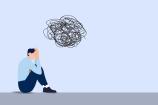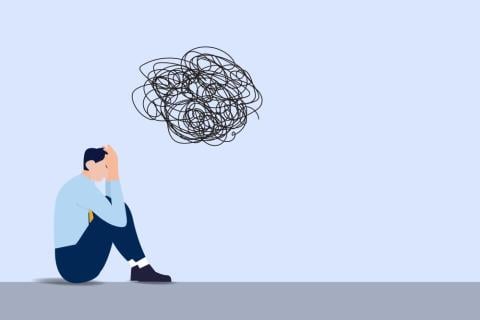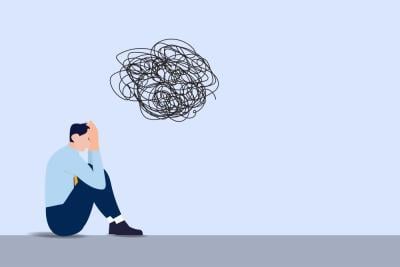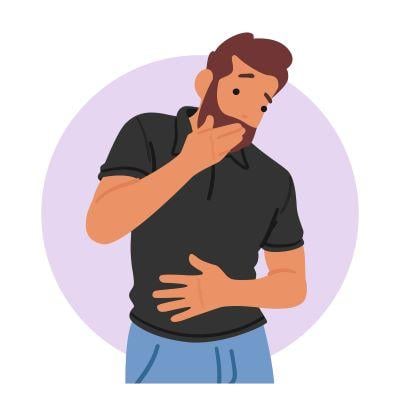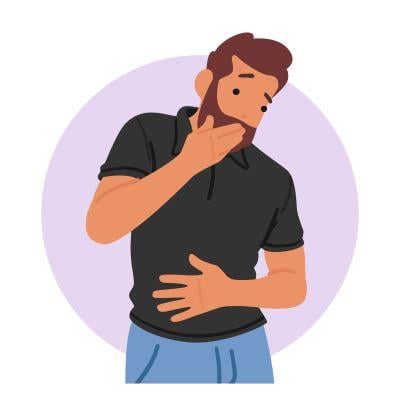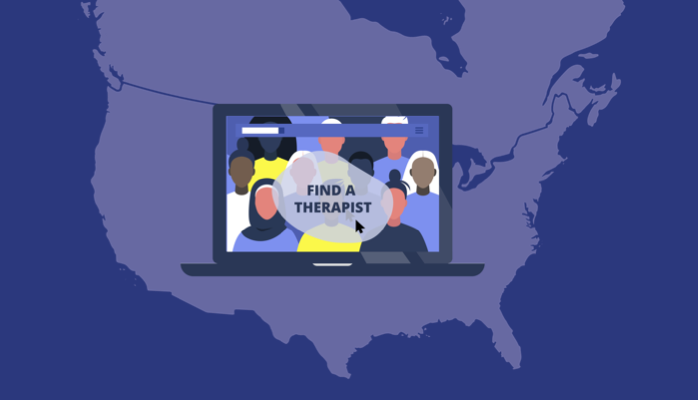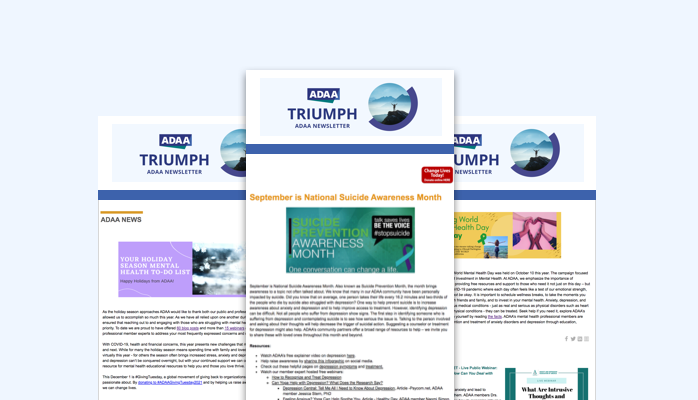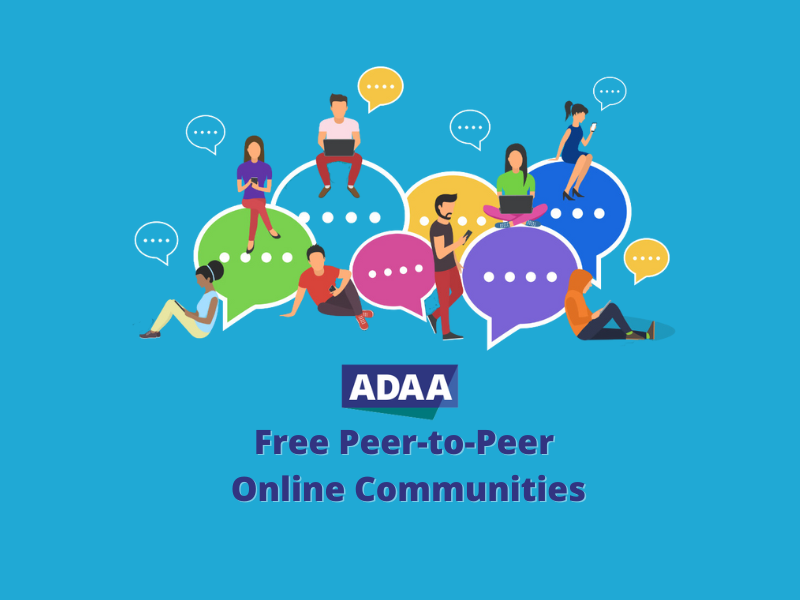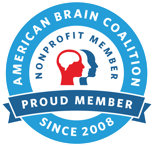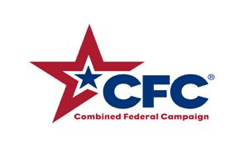What is OCD?
OCD is comprised of two components – obsessions and compulsions. Obsessions are unwanted thoughts, images, and urges that cause an individual anxiety, disgust, and/or distress. In an effort to alleviate the discomfort, the person will engage in compulsions, which are physical or mental behaviors that may or may not be repetitive, as well as avoidance of triggers, all of which provide short-term relief but ultimately perpetuate the OCD cycle.
The level of insight a person has about their disorder ranges, with some recognizing that their obsessionals are illogical and have no direct relationship with their compulsions, while others struggle to detangle the two. This is more likely to occur the longer someone has suffered without treatment.
Common Obsessions in OCD
It’s important to understand that OCD is extremely creative and knows no bounds when invading a person’s life. Research indicates that a person’s individual themes are often directly linked with what they value most in life, which is why the obsessions are especially distressing to them.
Among the most common OCD themes are:
- Scrupulosity (religious or moral OCD)
- Harm OCD
- Sexually aggressive themes
- Incest OCD
- Sexual Orientation OCD (previously referred to as Homosexual OCD)
- Gender Identity OCD (previously referred to as Transgender OCD)
- Pedophile OCD
- Hit and Run OCD
- Relationship OCD
- Contamination and illness
Keep in mind that people with these themes are not dangerous and there is no chance of them actually acting out these obsessions.
Common Compulsions in OCD
Although compulsions are in response to the distress caused by obsessions, there is not always direct logic connecting the two. In some cases, the compulsions “make sense,” such as excessive washing in response to contamination obsessions; however, others have no clear relationship, such as tapping a table four times to keep a loved one safe.
Among the most common compulsions are avoidance, checking/reviewing, reassurance-seeking, decontaminating, repeating, rewriting, confessing, trying to “figure it out,” thinking/saying a safe word/phrase, and ordering/arranging.
When people engage in compulsions there is no pleasure involved, but rather a reduction of distress. Individuals with OCD do not want to be doing compulsions, but their fears and anxiety about the consequences of not performing them are so great that the temporary relief offered feels worthy of the problems the compulsions cause.
How is OCD Diagnosed?
OCD can only be properly diagnosed by a licensed clinician, and preferably one who has experience and specializes in treating OCD. Because of how misunderstood the disorder is, it is often initially misdiagnosed, most commonly as an anxiety disorder, and sometimes as an eating disorder or psychotic disorders. As the evidence-based treatments for these disorders are different, an accurate diagnosis is crucial.
In the United States, diagnosing OCD is based on criteria set forth by the Diagnostic and Statistical Manual of Mental Disorders (DSM). Its current edition, the DSM 5-TR, sets forth three primary criteria for the diagnosis of OCD – obsessions, compulsions, and that they are time-consuming or cause clinically significant distress or impairment in various areas of functioning, including work, school, or social life.
There are several assessments that assess the severity of OCD symptoms, including the Yale-Brown Obsessive-Compulsive Scale (Y-BOCS), the Children’s Yale-Brown Obsessive-Compulsive Scale (CY-BOCS), and the Dimensional Obsessive–Compulsive Scale (DOCS).
Who Gets OCD?
- An estimated 1.2% of U.S. adults had OCD in the past year. (NIMH)
- Past year prevalence of OCD was higher for females (1.8%) than for males (0.5%). (NIMH)
- Lifetime prevalence of OCD among U.S. adults was 2.3%. (NIMH)
- Among adults with OCD, approximately one half (50.6%) had had serious impairment. Another 34.8% of adults with OCD had moderate impairment, and 14.6% had mild impairment. (NIMH)
- The prevalence of obsessive-compulsive disorder among children and adolescents is in the range of 1% to 3% (Flament MF, Whitaker A, Rapoport JL, et al. Obsessive compulsive disorder in adolescence: an epidemiological study. J Am Acad Child Adolesc Psychiatry. 1988;27:764–771; 10. Valleni-Basile LA, Garrison CZ, Jackson KL, et al. Frequency of obsessive-compulsive disorder in a community sample of young adolescents. J Am Acad Child Adolesc Psychiatry. 1994;33:782–791.)
- In the United States, the mean age at onset of OCD is 19.5 years, and 25% of cases start by age 14 years. Onset after age 35 years is unusual but does occur. (DSM-5)
- Males have an earlier age at onset than females: nearly 25% of males have onset before age 10 years. The onset of symptoms is typically gradual; however, acute onset has also been reported. (DSM-5)
- Without treatment, remission rates in adults are low (e.g., 20% for those reevaluated 40 years later). (DSM-5)
How is OCD Treated?
When seeking treatment for OCD, it’s crucial to ensure that the provider is utilizing evidence-based treatments for OCD. When a treatment is evidence-based, it means that science, along with other professionals, have confirmed that the therapy is beneficial for a specific issue. If a treatment is not evidence-based, the therapist is not utilizing best practices and patients are receiving treatment that at best is not helpful and at worst is harmful.
- One treatment for OCD is Exposure and Response Prevention (ERP). This technique involves exposure to a distressing trigger without engaging in any rituals. Through ERP, two changes occur: habituation and inhibitory learning. Habituation is the brain and body’s natural decrease in distress without engaging in rituals. The body learns that rituals aren’t needed for the distress to decrease, and as habituation continues, there is more long-term relief than the short-term relief achieved by rituals. The second change is inhibitory learning, or new safety learning. Because we can’t unlearn something, we want to provide additional information and experiences so that the initial response changes over time. Through inhibitory learning, a person understands that although a trigger may be distressing, it’s most likely not going to occur, and if it does, it likely will be less catastrophic than feared.
- Acceptance and Commitment Therapy (ACT) is another treatment that is evidence-based for OCD. It incorporates acceptance, mindfulness, and behavior-changing strategies in order to heighten psychological flexibility in an effort to be present and engaged in life with the goal of living life in the service of an individual’s life goals and values rather than in the service of symptom reduction and managing anxiety.
- Another evidence-based treatment for OCD is Inference-Based Cognitive Behavioral Therapy (I-CBT). This therapy targets the dysfunctional thinking that produces obsessional doubt. The 12 modules address the processes that create and maintain obsessional doubt, aiming to resolve these doubts and reduce inferential confusion. Through I-CBT people become grounded in the present and are able to dismiss the fictional stories that have developed in the imagination, which OCD has coopted, as irrelevant to their current lives. This treatment aids in regaining confidence and self-esteem that OCD has taken away.
- An additional treatment that has proven benefits to OCD is mindfulness. The two core principles of mindfulness are about being present and non-judgmental. The goal in being present is to get out of the head and into the body and increase awareness of what’s going on in the moment.
ADAA Resources
ADAA Blogs:
- Don’t Wait 17 Years: Get Help for OCD
- Hope for Christians with OCD
- OCD Strategies: We Do Not Hang Out With Bullies
- What Is Contamination OCD, and Why Is It Trending on TikTok?
- 6 Ways to Tackle BFRBs Outside Your Home
- Relapse Prevention for OCD: 4 Steps to Keep Your Progress Going
- Is Your Child Struggling with Anxiety or OCD? Key Ingredients to Help Your Child Succeed
- Three Steps to Being Your Own Compassionate Coach when OCD Keeps You Stuck
- Trusting Yourself Amongst Pedophilic Obsessions
- Compulsions – they aren’t always what they seem
- Differentiating Self-Harm OCD from Suicidal Ideation
- Family Accommodations
- Six Ways to Maintain Motivation in OCD Treatment
- Understanding the Difference: Harm-Related Intrusive Thoughts and Wanting to Hurt Someone
- Medication for Treatment of OCD: Understanding the Options
- Harm OCD vs. Being Dangerous
- The Role of Family Accommodations in Childhood OCD
- White Knuckling: All Pain, No Gain
- Tips to Combat the "What If's" of OCD During Pregnancy and After Birth
- Understanding Postpartum OCD and the Mother/Baby Attachment
- Residential Treatment for Youth with OCD: Answers to Your Top 3 Questions
- Is it OCD or Social Anxiety? Or is it Both?
- Busting Myths that Keep Unwanted Intrusive Thoughts Stuck
- When Reassurance Seeking Becomes Compulsive
- Why Do You Have OCD? Because What Your Resist Persists
- Protecting Yourself Against COVID-19 Doesn't Cause OCD
- Why Can't I Stop These Horrible Thoughts?
- Relationship OCD
- Questioning Whether You Have OCD When You Have OCD
- How to Take the Power Back from Intrusive Thought OCD
- Missing your OCD?
- Why is my OCD Worse On Vacation?
ADAA Webinars:
- Perfectly Imperfect Love: Tips To Recognize & Move Past Relationship OCD
- Supporting Your Child with Anxiety and/or OCD - Q&A
- Calming the Inner Chatter of Your Mind
- Does Your Child Have Anxiety or OCD?
- A Roadmap for OCD Treatment Options
- Mindfulness CBT to Move Past Intrusive Thought OCD
- Stop the Worry Cycle
- What are Intrusive Thoughts and How Can You Deal with Them?
- When Things Go Bump in Your Head: How to Master OCD with Unwanted Violent Thoughts
- OCD and Sibling Relationships: How to Cope When Your Brother or Sister Has OCD
- Pedophiles, Rapists and Murderers...Oh My: How to Disengage from Harm OCD & Re-engage in Your Life
- Helping Kids and Teens Who Have OCD
Personal Stories:
- Living with OCD, Autism and Depression
- Dreaming Beyond My OCD
- FU to my OCD: From Struggle to a Song that’s Inspired People Everywhere
- It Sounded Better in My Head
- My Obsessive Life
- I’m So OCD - But I’m Also So Much More
- OCD Took My Life Away at the Age of 8
- You Can Teach an Old(er) Dog – With OCD – New Tricks! (Or Why I Attended an OCD Treatment Program in My Late 40s)
- They're Just Thoughts
ADAA & International OCD Foundation (IOCDF) Partnership Video Series:
- What OCD Is and Is Not
- Obsessive Compulsive Disorder (OCD) vs Obsessive-Compulsive Personality Disorder (OCPD)
- Living with Obsessive Compulsive Disorder (OCD)


